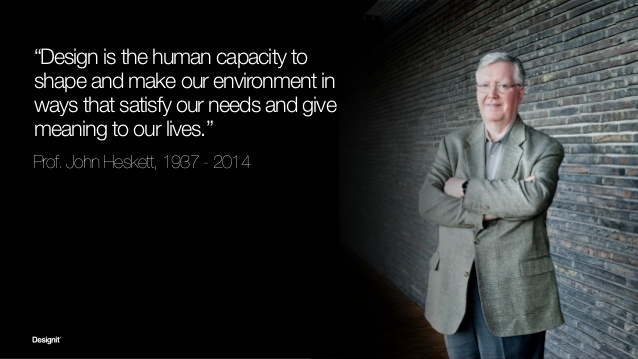Why The Design World Needs To Start Valuing What We Hear As Much As What We See
The best design is a marriage of all elements of a space that combine in harmony to form human experience. It is a marriage of the senses, working in synergy, exceeding expectations but not overwhelming them so as to be impractical. It is style and substance, art and function, aesthetics and ergonomics.

John Heskett, a 20th-century British writer on design said, "Design, stripped to its essence, can be defined as the human nature to shape and make our environment in ways without precedent in nature, to serve our needs and give meaning to our lives".
As our lives become increasingly based online, design of physical spaces becomes more important. We are living in the ‘experience economy’, a term first used in 1998 by Joseph Pine and James Gilmore, and used to advocate that businesses “must orchestrate memorable events for their customers, and that memory itself becomes the product: the ‘experience’”.

In order to create these experiences, businesses have an opportunity to use all five senses as touchpoints that deliver something unique. In the past 50 years the rise of interior design industries as a continuation of architectural practise is now firmly established and appeal to our visual and tactile senses. And more recently, businesses have experimented with the use of sound and smell to further enhance our experiences.
At Open Ear, we’ve always found sound to be the most interesting, and it’s still the least understood of all the senses. Spaces are rarely set up for sound; we see terrible acoustics throughout the design world, compounded with cheap loudspeakers and retrofit speaker positioning leading to poor coverage and terrible fidelity. Even when the acoustics of a space are treated adequately, we often hear a shockingly bad quality of music, played either too loud or too quietly via not-fit-for-purpose and unlicensed digital players. And then we have the song selection: too often left to the whim of staff members, musically-out-of-touch owners or ‘background music’ companies who fail to curate properly in favour of a quicker and more cost-effective ‘solution’.

The problem with ‘solutions’ is that they are obviously cost-led rather than design-led, which unfortunately hinders the design process and the quest for optimal experiences. What is the purpose of spending thousands on a visual interior and then not considering the other senses? How can you justify investing in a moderately good soundsystem and then leaving the music selection up to whoever’s working that day?
If design is really meant to give meaning to our lives, then we need start understanding the impact that sound has and then crediting the people and companies that are helping to make a difference in the world of audio design. Giving sound and music design an equal footing alongside other more readily accepted design practises is a great start.
Oct 2018
Brian d’Souza
Founder and Managing Director of Open Ear